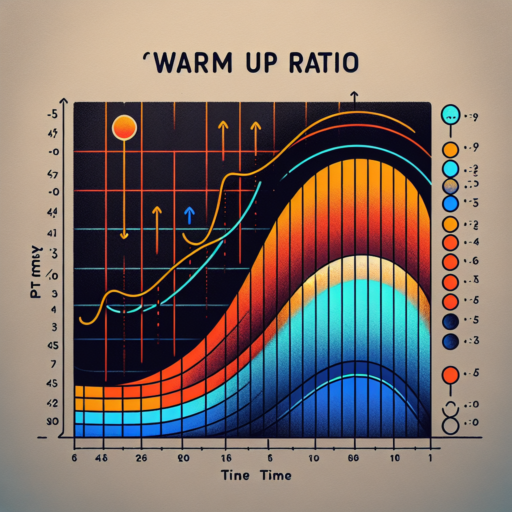Understanding Aerobic Threshold Heart Rate
The concept of aerobic threshold heart rate is pivotal for athletes, fitness enthusiasts, and anyone looking to optimize their cardiovascular health and endurance performance. At its core, the aerobic threshold defines the point during exercise at which your body shifts from burning a mix of fats and carbohydrates for energy to mostly carbohydrates. Understanding this threshold enables individuals to tailor their training sessions to improve efficiency and endurance while minimizing fatigue and the risk of overtraining.
Finding your aerobic threshold heart rate involves a blend of field tests, laboratory tests, or using heart rate monitors during specific workouts designed to identify this transition point. It’s a critical measure for structuring workouts, especially for endurance athletes who rely on sustaining prolonged efforts at optimal intensities. Training just below the aerobic threshold can enhance the body’s fat-burning capability, thereby improving endurance without significantly depleting carbohydrate stores.
It’s vital to recognize the signs that you’re crossing over from aerobic to anaerobic exercise – a surge in breathing rate, a notable increase in effort, and eventually, muscle fatigue due to lactic acid accumulation. By staying just below this threshold during the majority of training, athletes can extend their time to exhaustion, enabling longer, more effective workout sessions. This nuanced approach to training promises not just enhanced performance but also reduced risk of injury and a solid foundation for peak performance.
How to Determine Your Aerobic Threshold Heart Rate
Understanding your aerobic threshold heart rate is essential for optimizing your training and improving endurance. This specific heart rate zone allows you to exercise for extended periods without producing too much lactate, which causes fatigue. Identifying this threshold can help you tailor your workouts to enhance both aerobic capacity and fat burning. Here, we’ll explore the practical steps you can take to determine your aerobic threshold heart rate effectively.
Step 1: Understand the Basics
Firstly, it’s crucial to grasp the basic concept of the aerobic threshold. This threshold is typically defined as the point at which your body starts to produce lactate at a faster rate than it can be cleared, shifting from aerobic (oxygen-based) to anaerobic (lactate-based) energy production. For most individuals, the aerobic threshold occurs at 60-70% of their maximum heart rate. However, the exact percentage can vary based on fitness level, age, and training history.
Step 2: Use a Heart Rate Monitor
To accurately determine your aerobic threshold heart rate, using a heart rate monitor during exercise is advisable. Begin with a warm-up, and then gradually increase your exercise intensity. Pay close attention to your body’s signals. You’re likely nearing your aerobic threshold when you can still talk comfortably but notice your breathing rate increasing. Record the heart rate at this point, as it closely approximates your aerobic threshold.
Finding your aerobic threshold heart rate is a stepping stone to crafting a training regimen that’s finely tuned to your body’s capabilities. While the methods described provide a starting point, remember that individual variations require sometimes refining these approaches through trial and observation. Monitoring improvements in your capacity to handle different intensities over time can also offer insights into shifts in your aerobic threshold, enabling more personalized and effective training strategies.
The Importance of Aerobic Threshold in Fitness and Endurance Training
Understanding the role of the aerobic threshold in fitness regimes, particularly in endurance training, is crucial for athletes aiming to enhance their performance sustainably. The aerobic threshold signifies the intensity at which your body shifts from burning a mixture of fats and carbohydrates to primarily carbohydrates. Recognizing and training at this threshold can improve endurance by optimizing energy usage, allowing athletes to perform longer without fatiguing prematurely.
Training at or just below your aerobic threshold has numerous benefits, including improvements in metabolic efficiency. This efficiency enables athletes to utilize fat as the primary fuel source, preserving glycogen stores for more intense phases of exercise. Consequently, this metabolic shift is pivotal for endurance athletes, such as marathon runners or long-distance cyclists, who require sustained energy over long periods. Additionally, working within this threshold fosters cardiovascular health by improving heart and lung function, thereby enhancing the delivery of oxygen to the muscles.
Incorporating aerobic threshold training into your routine doesn’t necessitate a complete overhaul of your workouts. It can be as simple as integrating steady-state cardio exercises, such as running or cycling, at a pace where you can maintain a conversation. This approach not only bolsters endurance but also aids in recovery during higher-intensity sessions. Moreover, it lays a robust foundation upon which to build high-intensity exercises, effectively reducing the risk of burnout and injury. Recognizing the importance of this threshold thus empowers athletes to craft more effective, balanced training schedules that cater to long-term performance and health.
Aerobic vs. Anaerobic Threshold: What’s the Difference?
Understanding the difference between aerobic and anaerobic threshold is essential for athletes, coaches, and fitness enthusiasts aiming to optimize performance and training routines. The aerobic threshold signifies the highest level of exercise intensity at which your body can still produce energy through the aerobic energy system, effectively using oxygen. Beyond this point, the body shifts towards anaerobic energy production, indicating you’ve crossed into the anaerobic threshold.
Aerobic Threshold: The Foundation of Endurance
At the aerobic threshold, your body utilizes oxygen to convert carbohydrates and fats into energy, a process that supports sustained physical activity over longer durations. This is the zone where you can carry on a conversation while exercising. Training at or just below the aerobic threshold improves endurance and efficiency in utilizing oxygen, crucial for long-distance runners, cyclists, and athletes involved in endurance sports.
Anaerobic Threshold: Pushing the Limits
When exercise intensity surpasses the aerobic threshold, the body starts to depend more on the anaerobic system for energy. This shift leads to the production of lactate and hydrogen ions, contributing to muscle fatigue and the classic ‘burn’ feeling. Training at or above the anaerobic threshold is beneficial for improving speed, increasing muscle strength, and enhancing the ability to tolerate and clear lactate more efficiently. This is particularly important for sprinters, football players, and individuals focusing on high-intensity, short-duration activities.
By distinguishing between these thresholds, athletes and trainers can tailor their training programs to achieve specific performance goals, whether it’s improving endurance, speed, or overall fitness. Understanding and utilizing the concepts of aerobic and anaerobic thresholds can lead to noticeable improvements in both training outcomes and competitive performance.
Training Techniques to Improve Your Aerobic Threshold Heart Rate
Improving your aerobic threshold heart rate is pivotal for athletes and fitness enthusiasts aiming to enhance their cardiovascular endurance and performance. The aerobic threshold, or the point at which your body switches from burning fat to glucose for energy, is a critical marker for stamina and efficiency in physical activities. By incorporating specific training techniques, you can significantly elevate this threshold, allowing you to exercise longer and harder before fatigue sets in.
Interval Training
One of the most effective methods to boost your aerobic threshold heart rate is through interval training. This technique involves alternating periods of high-intensity exercise with low-intensity recovery phases. It not only pushes your heart to adapt to various stresses but also increases your overall aerobic capacity. Interval sessions can vary from short sprints to longer bouts of intensity, each designed to gradually raise your aerobic threshold and improve heart health.
Tempo Runs
Tempo runs are another valuable tool for enhancing your aerobic threshold. Characterized by running at a «comfortably hard» pace, these workouts should be performed at the edge of your aerobic limit. They teach your body to process lactic acid more efficiently, consequently raising your threshold. Incorporating regular tempo runs into your training regime can lead to significant improvements in endurance and delay the onset of muscle fatigue during prolonged physical activity.
Consistently applying these training techniques can lead to marked improvements in your aerobic threshold heart rate. Interval training and tempo runs, in particular, are cornerstone methods that target this specific fitness component. By pushing your body just beyond its comfort zone and allowing adequate recovery, you can greatly enhance your cardiovascular capabilities and overall athletic performance.
No se han encontrado productos.
Benefits of Aerobic Threshold Heart Rate Training
Engaging in aerobic threshold heart rate training offers a multitude of benefits that contribute to overall fitness and health. By focusing on this specific zone, individuals can optimize their cardiovascular performance, ensuring that efforts spent on workouts align precisely with their fitness goals. Notably, this method of training aids in enhancing endurance and improving cardiac efficiency.
Enhanced Cardiovascular Efficiency
One of the key advantages of targeting the aerobic threshold is the improvement in the heart’s ability to pump blood. Training in this heart rate zone increases the heart muscle’s efficiency, enabling it to deliver more oxygen-rich blood to muscles with fewer beats. Over time, this can lead to a lower resting heart rate and a reduced risk of cardiovascular diseases. Emphasizing this benefit, individuals can see remarkable improvements in their day-to-day energy levels and overall vitality.
Increased Fat Burning
Another significant benefit is the optimized fat burning. Training at the aerobic threshold encourages the body to utilize fat as the primary source of energy, boosting fat metabolism and aiding in weight management. This shift to fat burning helps in enhancing endurance, as the body learns to conserve its glycogen stores and rely on a more abundant energy source. Consequently, individuals can extend their workout duration and intensity without a proportional increase in perceived effort.
In conclusion, incorporating aerobic threshold heart rate training into regular workout routines presents an effective strategy for achieving enhanced athletic performance, boosting cardiovascular health, and improving metabolic efficiency. By methodically focusing on this specific training zone, individuals are able to reap significant health and fitness benefits, paving the way for a healthier lifestyle.
Tools and Gadgets to Monitor Your Aerobic Threshold Heart Rate
Monitoring your aerobic threshold heart rate is essential for anyone looking to optimize their fitness routine and performance. With advancements in technology, there are now a plethora of tools and gadgets designed to help athletes, fitness enthusiasts, and even beginners track their heart rate accurately. These devices not only aid in ensuring you’re training within the right heart rate zones but also help in preventing overtraining and reduce the risk of injury.
The market is flooded with various options, ranging from wearable tech like smart watches and fitness bands to more specialized equipment. Wearable devices have become incredibly popular due to their convenience and integrated features. Brands like Garmin, Apple, and Fitbit offer smart watches and fitness trackers that not only monitor heart rate but also provide insights on performance, sleep patterns, and even stress levels. These gadgets are equipped with sensors that track your pulse through your wrist, making them a great all-in-one tool for health and fitness monitoring.
For those looking for something more specialized, chest strap heart rate monitors are known for their accuracy. Unlike wrist-based sensors, chest straps measure electrical signals directly from the heart, providing data that is closer to what you would get from medical-grade equipment. Popular brands like Polar and Wahoo have developed chest straps that easily connect to smartphones and fitness apps, making it straightforward to keep tabs on your aerobic threshold heart rate during workouts.
Another innovative option is the rise of ear-based heart rate monitors. These gadgets leverage the ear’s consistent blood flow as an accurate point for measuring heart rate. Companies like Jabra and Bose have integrated this technology into their sports headphones, offering users the ability to listen to music while also receiving real-time heart rate data. This is particularly appealing for runners or those who prefer minimal equipment during their exercise.
Common Mistakes to Avoid When Training at Aerobic Threshold
Training at your aerobic threshold can be a critical component of improving your cardiovascular fitness, endurance, and overall health. However, there are several common mistakes that individuals often make during this type of training, which can lead to inefficiencies, increased risk of injury, and diminished results.
Ignoring Proper Warm-Up and Cool-Down
A vital mistake is bypassing a proper warm-up and cool-down session before and after your aerobic threshold training. A warm-up gradually increases your heart rate and prepares your muscles for more intense activities, reducing the risk of injuries. Equally important, a cool-down helps to gradually bring your heart rate back to normal and can prevent dizziness and muscle stiffness. Neglecting these steps can significantly affect your performance and recovery.
Not Tracking Heart Rate
Another common pitfall is failing to monitor your heart rate during aerobic exercises. Training at your aerobic threshold requires you to maintain your heart rate within a specific range, usually 70-80% of your maximum heart rate, to ensure you are training efficiently. Without tracking, you may unknowingly be training above or below this threshold, which can either lead to overexertion or inadequate intensity, ultimately affecting your training outcomes.
Overlooking Rest and Recovery
Lastly, the importance of rest and recovery cannot be overstated. Some individuals mistakenly believe that more is always better and neglect the necessary rest days, leading to overtraining and insufficient recovery. This approach can derail progress, as rest days allow your body to recover and muscles to grow stronger. Incorporating rest days and ensuring adequate sleep are crucial components of an effective aerobic threshold training program.
Success Stories: How Aerobic Threshold Training Transformed Athletes
The transformative power of aerobic threshold training on athletes is both profound and inspirational. This specific mode of training, focusing on enhancing the body’s capacity to utilize oxygen more efficiently, has been a game-changer for many. It’s not just about endurance; it’s about revolutionizing performance across the board.
Athletic Performance and Endurance Boost
The journey of many athletes from various disciplines highlights the significant boost in performance and endurance post-adoption of aerobic threshold training. The methodology, characterized by sustained exercise at a controlled intensity level, optimizes aerobic capacity and efficiency. Athletes have reported not only improvements in their stamina but also in their overall health and recovery times.
Case Studies: From Amateur to Pro
Specific case studies spotlight the dramatic transformations experienced by athletes who integrated aerobic threshold training into their regimen. From amateurs struggling with plateaus in their performance to seasoned professionals seeking an edge, the narrative is consistent. Enhanced aerobic efficiency translates to improved performance metrics, ranging from faster race times to longer periods of peak performance during competition.
The evidence is clear: aerobic threshold training is not just another fitness fad. It’s a research-backed, athlete-tested approach to unlocking potential and pushing the limits of athletic performance. The successes are not isolated; they echo in the stories of countless athletes who’ve seen their capabilities soar to new heights, thanks to this disciplined, science-driven practice.
Frequently Asked Questions About Aerobic Threshold Heart Rate
One of the most common inquiries about fitness and aerobic workouts is the concept of the aerobic threshold heart rate. This metric is fundamental to understanding how to exercise efficiently for fat burning, endurance improvement, and cardiovascular health. By diving into the most frequently asked questions, we offer insights into how you can leverage this understanding to enhance your fitness regimen.
What is Aerobic Threshold Heart Rate?
The Aerobic Threshold Heart Rate is the intensity at which your body switches from burning a more significant percentage of fat to a more significant percentage of glucose. It’s a critical point for athletes and fitness enthusiasts aiming to optimize their endurance and fuel usage during exercises. Identifying this level helps tailor a workout plan that maximizes fat oxidation while improving cardiorespiratory fitness.
How Can You Determine Your Aerobic Threshold Heart Rate?
Determining your aerobic threshold heart rate involves some testing and observation. Typically, it’s identified through a lactate threshold test conducted by exercise professionals. However, a more accessible method for everyday athletes involves the use of heart rate monitors and following a guided test involving steady-state exercise at increasing intensities until reaching a noticeable shift in effort and breathing.




